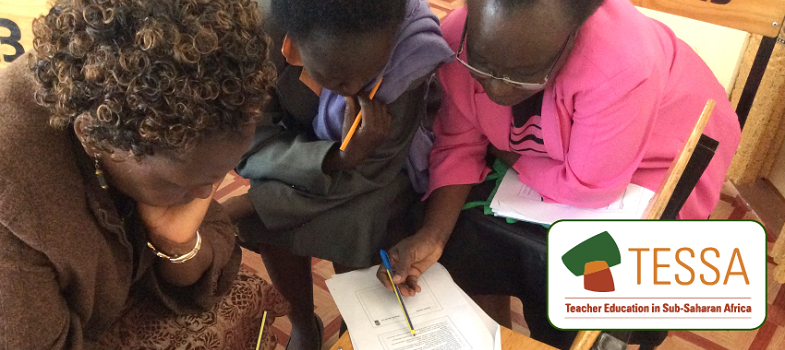3. A TESSA Teaching Lower Secondary Science Unit
Each unit is divided into sections. Teachers and teacher educators can use the whole unit, or select individual case studies, activities and resources to use as they wish. The table below explains the purpose of each section.
| Title | Indicates the subject (biology, chemistry or physics), the pedagogical theme and the science topic used to exemplify the theme. |
|---|---|
| Learning Outcomes | Each section has a maximum of three intended learning outcomes for the teacher. These centre on the development of classroom skills in the context of a topic from the secondary science curriculum. |
| Introduction | The introduction sets the scene for the unit. It outlines classroom skills to be developed by the teacher and the curriculum content area that is addressed. |
| Narrative | The narrative provides a rationale for the case studies and activities and highlights the purpose of each. It may briefly describe a relevant theoretical perspective, additional subject knowledge for the topic or the location of additional supporting resources. The purpose of the narrative is to help teachers to understand the approach sufficiently well to be able to transfer their learning to new curriculum contexts. |
| Case Studies | Every section has three case studies, each linked to a particular activity. The case studies illustrate ideas and concepts by describing how one teacher has approached the linked activity or a similar activity in their classroom. They often focus on one particular aspect of the activity or on a particular classroom situation – for example working with a multi-grade class, with very large numbers of pupils or in particularly challenging circumstances. |
| Activities | The three activities are at the heart of each section. They offer activities for teachers to undertake in their classroom, with pupils or in the wider school and community. The activities are all student-centred and highly engaging for pupils. Some activities are very short – perhaps a twenty minute task – whilst others are projects stretching over several weeks. The majority should occupy one lesson. They show teachers how resources available locally can be used in their teaching and do not rely on teachers having specialist equipment. |
| Resources | Each section has up to six supporting resources. These can take a variety of forms. They are chosen to enrich the teachers’ learning and support their delivery of the activities. The resources support the development of different dimensions of a teacher’s knowledge base, including:
A few of the resources are intended for use with pupils. Icons are used to show the core purpose of a resource. These are:
|
2. TESSA Teaching Lower Secondary Science



